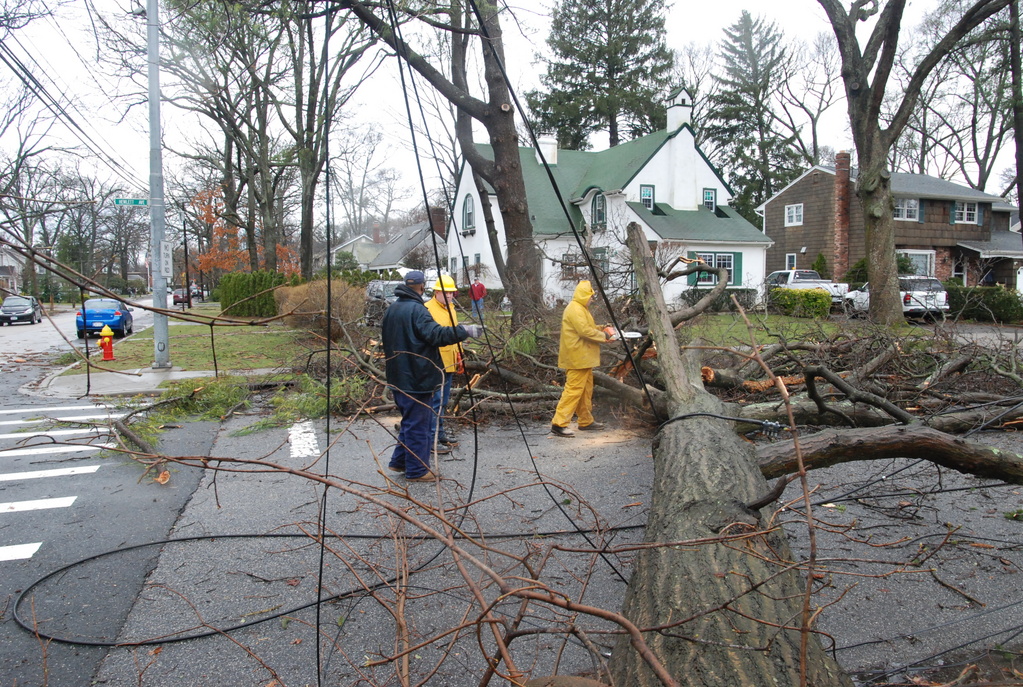Bellmore-Merrick takes stock after the 'superstorm'
When torrential rain and near-hurricane-force winds swept across Long Island on March 13, leaving destruction in their wake, Merrick appeared to be the hardest hit of the four communities that comprise the Bellmore-Merrick area.
The all-volunteer Merrick Fire Department received its first distress call at 10:56 a.m. that Saturday. Over the next 48 hours, Merrick firefighters responded to 160 calls, said Lt. Ryan Cassidy, who assisted during the nor'easter as a dispatcher in the F.D.'s command center at Empire Hose Company on Merrick Avenue. That's more calls than the Bellmore, North Bellmore and North Merrick departments combined, each of which responded to roughly 50, according to officials in those departments.
The storm's 75-mph winds knocked down dozens of trees and power lines throughout Merrick. Ron Luparello, a former F.D. chief who is now its public relations liaison, said, "We knew it was going to be a lot of rain and gusts of wind, but the intensity of the storm caught everyone by surprise. Trees were coming down as we were going down the street. We were dodging [live] wires. Fences were exploding."
Particularly hard hit were houses that lined the bays, Luparello said. Waves crashed over bulkheads into homes; some houses were so drenched with saltwater that interior walls cracked in half.
"It was like a war zone," Luparello said.
At one point, the department received a call that the Cancos Tile building on Merrick Road had collapsed, Cassidy said. As it turned out, part of the roof had been ripped off by high winds.
So, how did the Merrick F.D. cope during the tempest?
Luparello said the department quickly acted on its emergency management plan, stationing fire engines on key thoroughfares throughout the community so they could respond rapidly to calls as they came in. Many of the 60 firefighters on call slept at the command center.
"It's something we've always talked about in a big hurricane," Luparello said.
Cassidy added, "It was a lot of problem solving."
Communications were, at times, problematic during the storm, Luparello and Cassidy said. The command center lost phone service; then its 20-year-old radios went down for a short time, so firefighters communicated by cell phone at one point.

 64.0°,
Mostly Cloudy
64.0°,
Mostly Cloudy 







